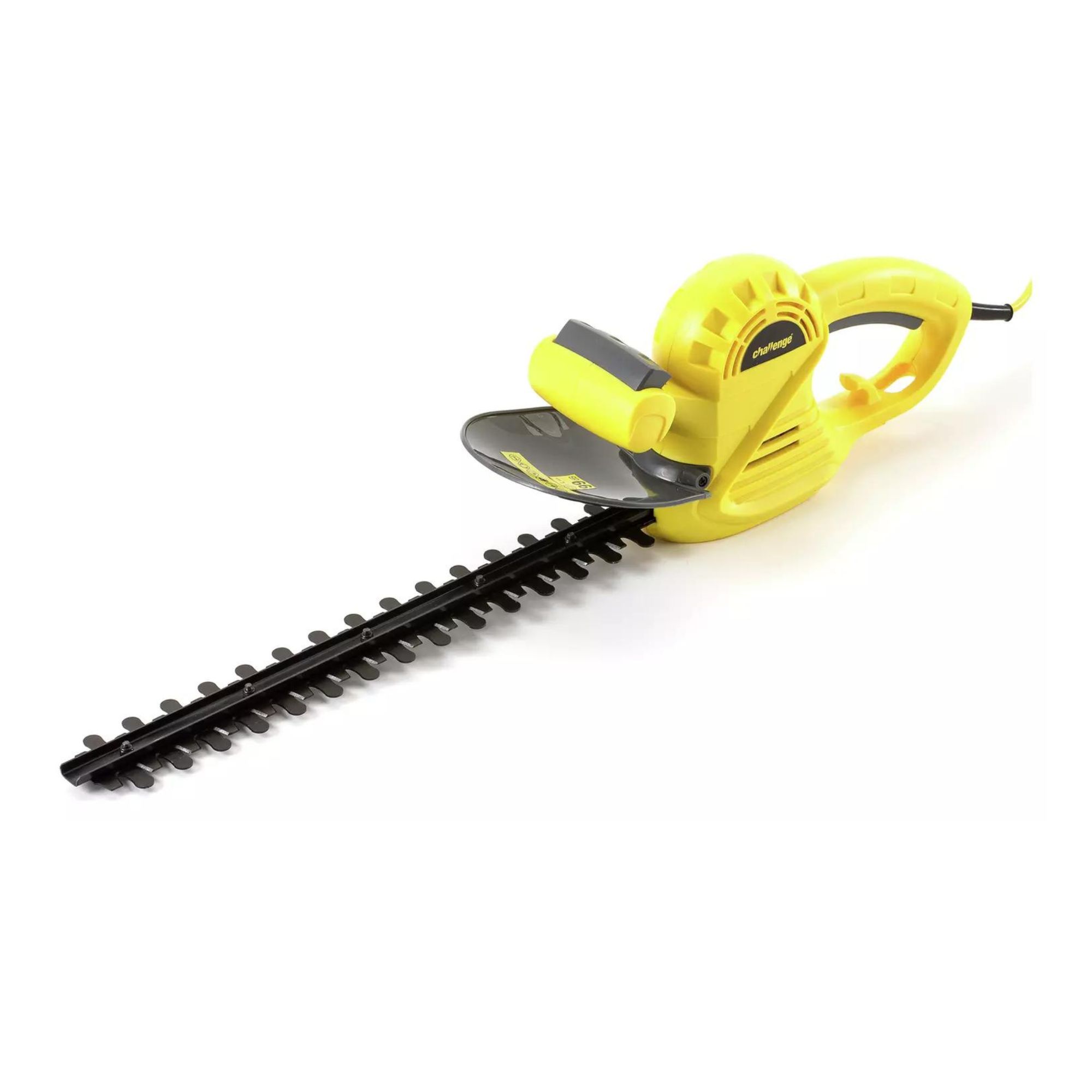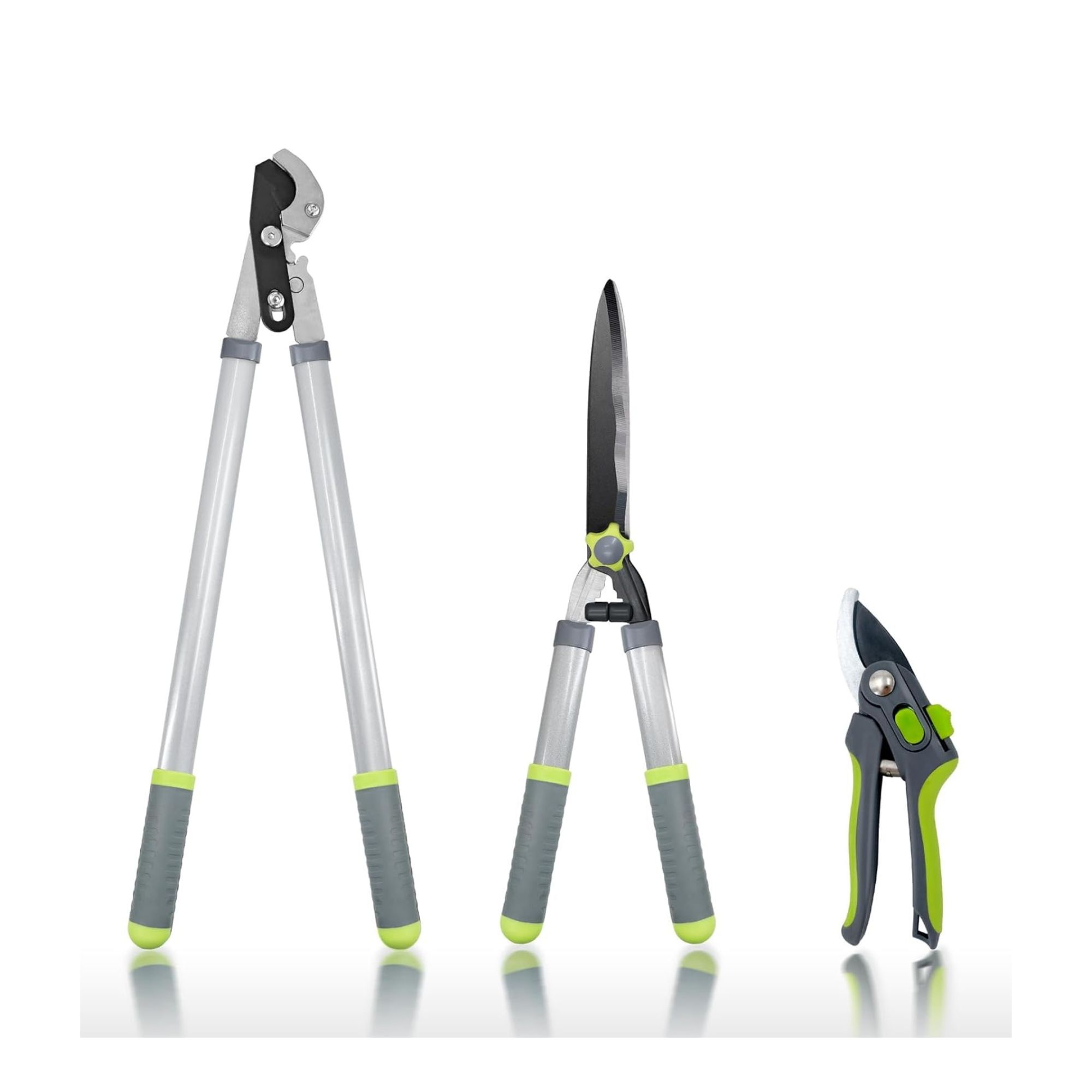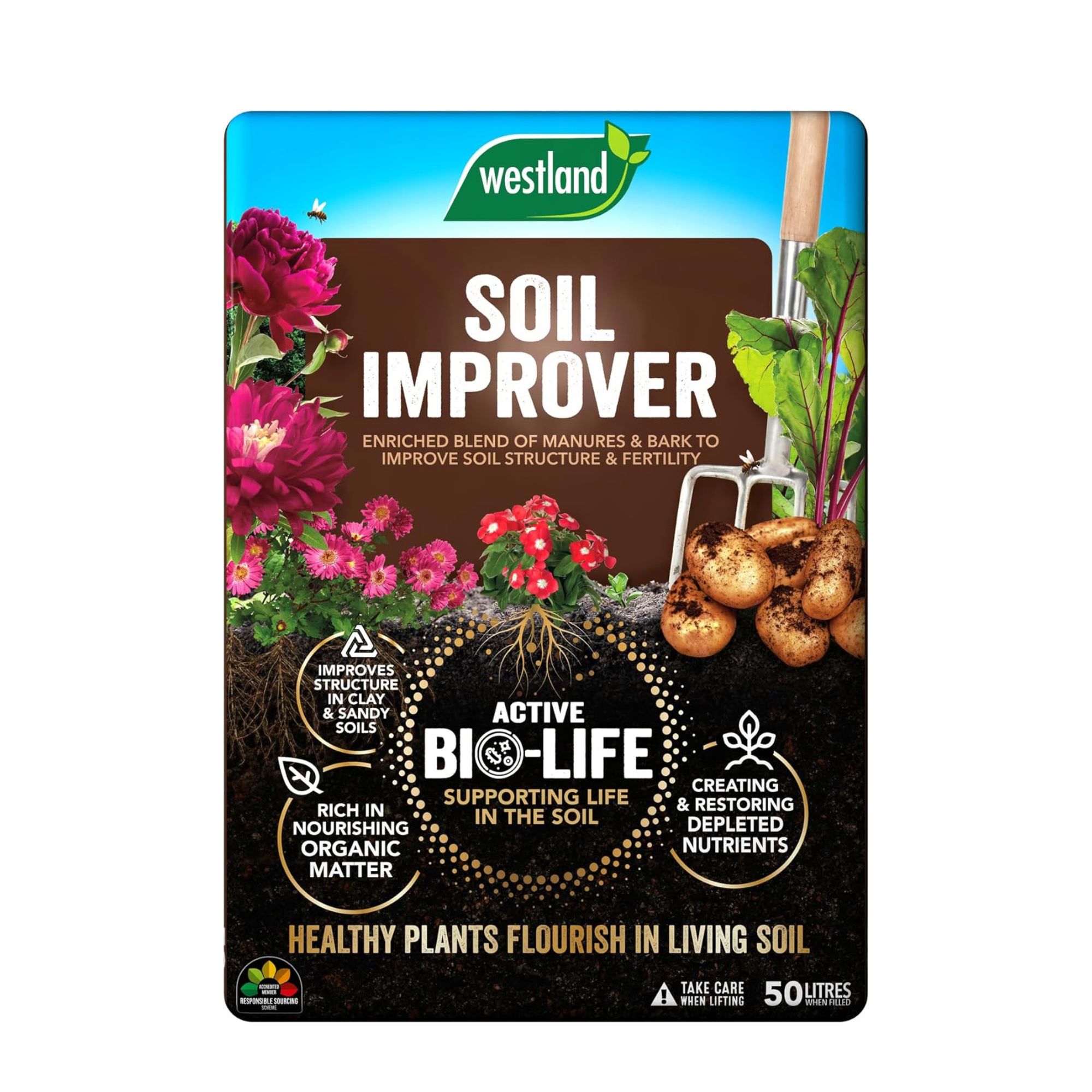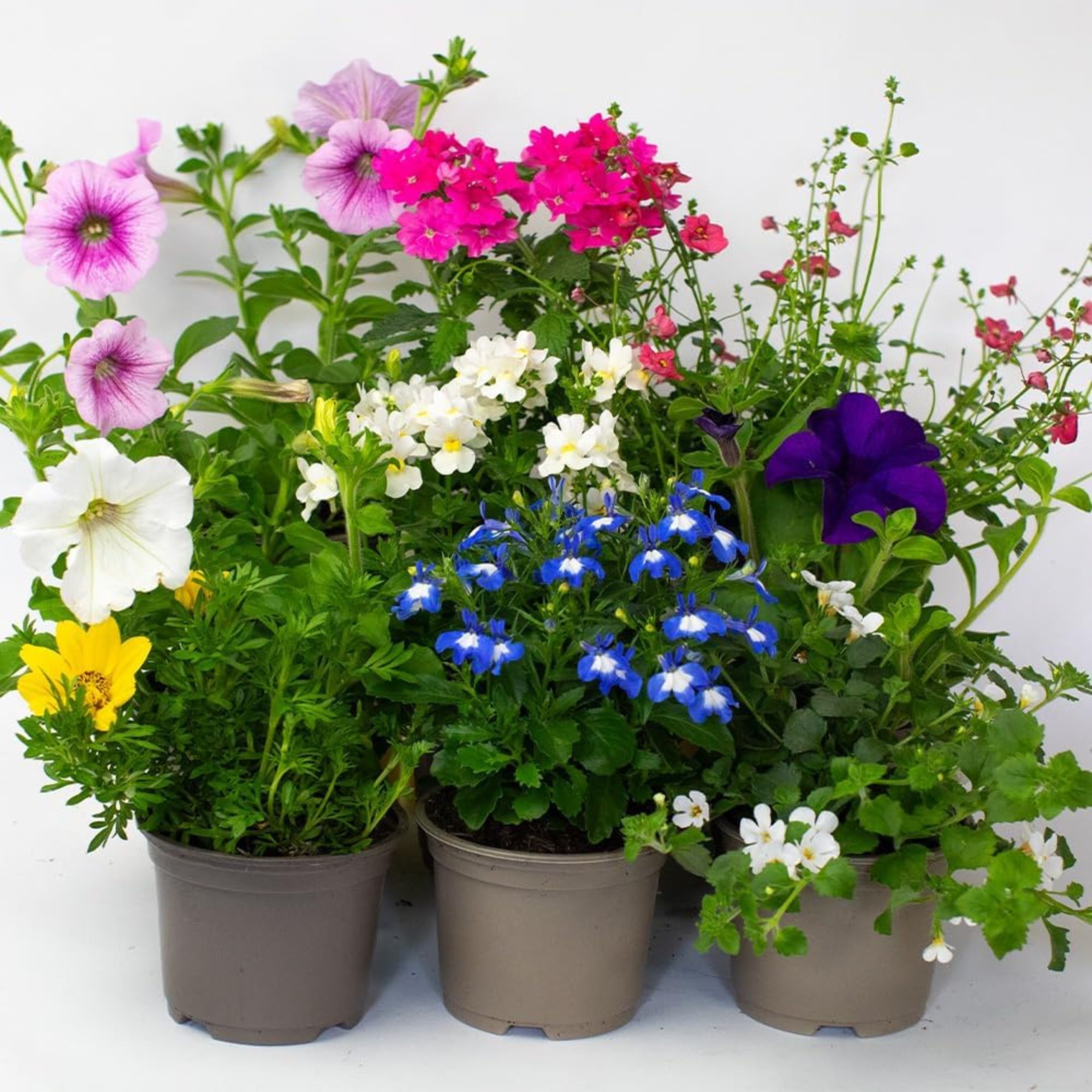How to tackle an overgrown garden - tame an unloved outside space and restore it to its former glory
An overgrown garden can be overwhelming, but it doesn’t have to be
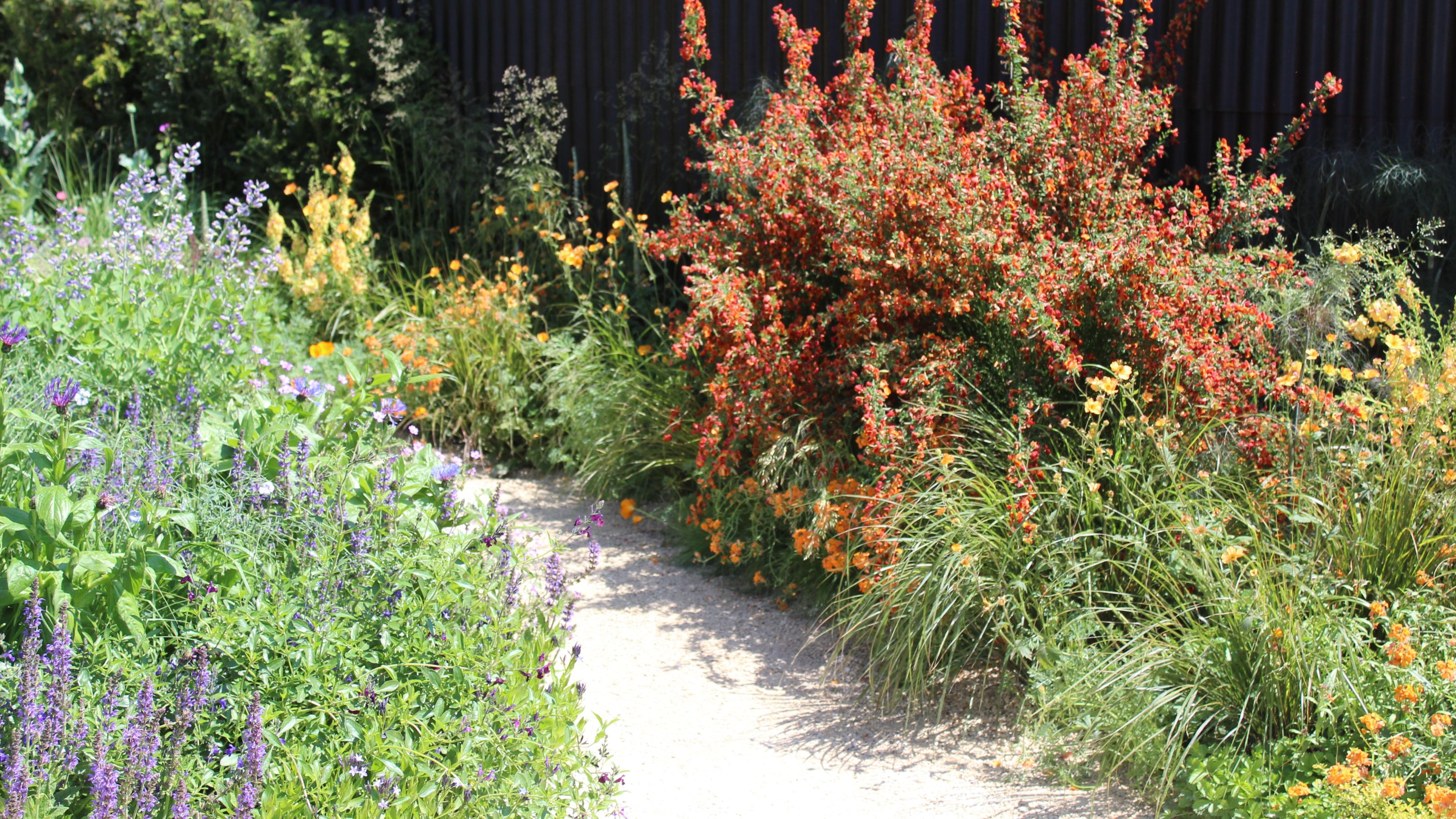

Whether you’ve just moved house or not given your garden the attention it deserves, you might be wondering how to tackle an overgrown garden. And we can assume that you’re probably feeling pretty overwhelmed, too.
After all, even the best garden ideas can be ruined by time. You only have to head off on holiday for two weeks to be greeted with a messy, out-of-control garden when you get back - and this just gets worse if previous owners or novice gardeners ignored their overgrown greenery for months or even years on end. That’s why it’s so important to sort it out sooner rather than later.
Tackling an overgrown garden can be daunting, though, so we’ve pulled together everything you need to nail this task yourself - from the tools you need at your disposal to the running order that will work best for you and your garden. Then, you can restore it to its former glory… or even better.
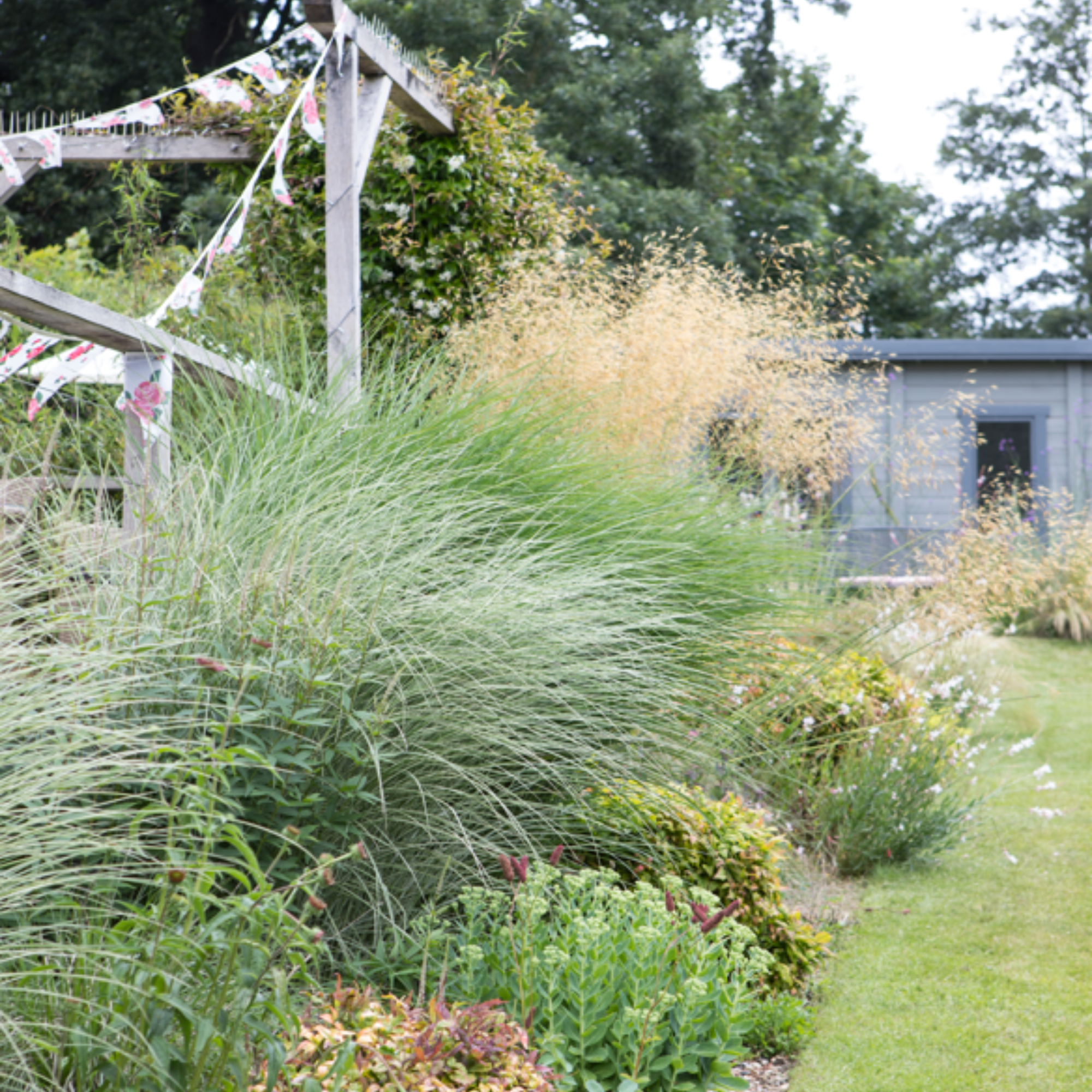
1. Make a plan of action
When faced with an unloved, overgrown garden, it’s easy to feel overwhelmed. But if you take a step back and assess your garden, you can make a plan of action that will make it easier to tackle it.
Tony Williams, Estates Manager at Mount Ephraim Garden, explains, ‘Assess your garden to understand the layout and identify areas that need the most attention. Gather tools such as gloves, pruning shears, loppers, rakes, wheelbarrows, and garden waste bags.’
If your garden is particularly overgrown, you may require extra reinforcements. This is echoed by Harry Bodell, gardening expert at PriceYourJob.co.uk, who says, ‘If there’s a lot of vegetation to clear, hire some heavy-duty equipment to speed things up and avoid doing it all by hand.’
If you don’t have space on your compost heap to add more, or you don’t have a garden waste bin, you may need to hire more help, too. Harry says, ‘Arrange to have a skip or garden waste bag delivered, so you have somewhere to chuck branches, weeds and anything else you uncover.’
Sign up to our newsletter for style inspiration, real homes, project and garden advice and shopping know-how

Tony is a keen and experienced gardener who has worked in horticulture across a variety of sites, including Canterbury Cathedral. He is extremely interested in sustainable gardening and strives to avoid polluting chemicals in fertiliser and pest control. He is dedicated to preserving natural resources and reducing water waste wherever possible.
2. Clear some space
Sometimes, clearing some space is the hardest part of tackling an overgrown garden, but it’s an essential step that needs to be done properly. So, head into the garden with some heavy-duty gloves and your enthusiasm.
Before you start tackling the greenery, walk around your garden and remove any rubbish that’s lying around. This could be old pots, wrappers and packets, or just general household waste. But you don’t necessarily have to get rid of it.
Morris Hankinson, Managing Director of Hopes Grove Nurseries, says, ‘If there is anything that can be recycled or up-cycled, keep it to the side to see if you can use it later.’

Once you’ve done that, you can then start clearing the overgrowth that you want to get rid of. You can do this with good-quality shears or even use a hedge trimmer to get the job done. Just remember to keep your patience.
‘This part can seem the worst, but once you get going, you can make a really big difference and start to see the space you have better,’ urges Morris.
And when you get a better look at what you’re working with, you can then focus your attention on removing any dead or diseased plants you spot in your garden. If your garden has been particularly overgrown for a while, you might be there for a while.

Morris Hankinson is the founder and managing director of Hopes Grove Nurseries Ltd, the UK’s only specialist grower-retailer of hedging plants. He established the thriving business in 1992, shortly after graduating with a Commercial Horticulture Degree from Writtle College, Essex.
3. Assess your hard landscaping
When you can see more of your garden, you should then take a proper look and inspect the hard landscaping. After all, it may be that you have to fix a fence, replace or clean your patio, buy a new shed, or just give your garden path a little TLC.
This is especially important if you’re tackling an overgrown garden to put your home on the market. As Leanne Fox, gardening expert at Argos, explains, broken fences can reduce the value of your home by £12,335.
She says, ‘It might sound mundane, but a good fence can do wonders for a garden refresh. Give any fencing a once over and make sure nothing needs replacing. Even a lick of paint or fence stain can really round off a garden and makes everything else look fresh.’
Morris agrees that giving your hard landscaping a once-over at this stage will work in your best interest. ‘It is well worth sorting the harder landscaping jobs before considering planting. Making the garden safe with clean paths and fixed fences will help you get the garden ready for planting,’ he says.’

Crowned the 'best overall' pressure washer in our guide, this pressure washer can help you clean your patio or refresh your garden path.
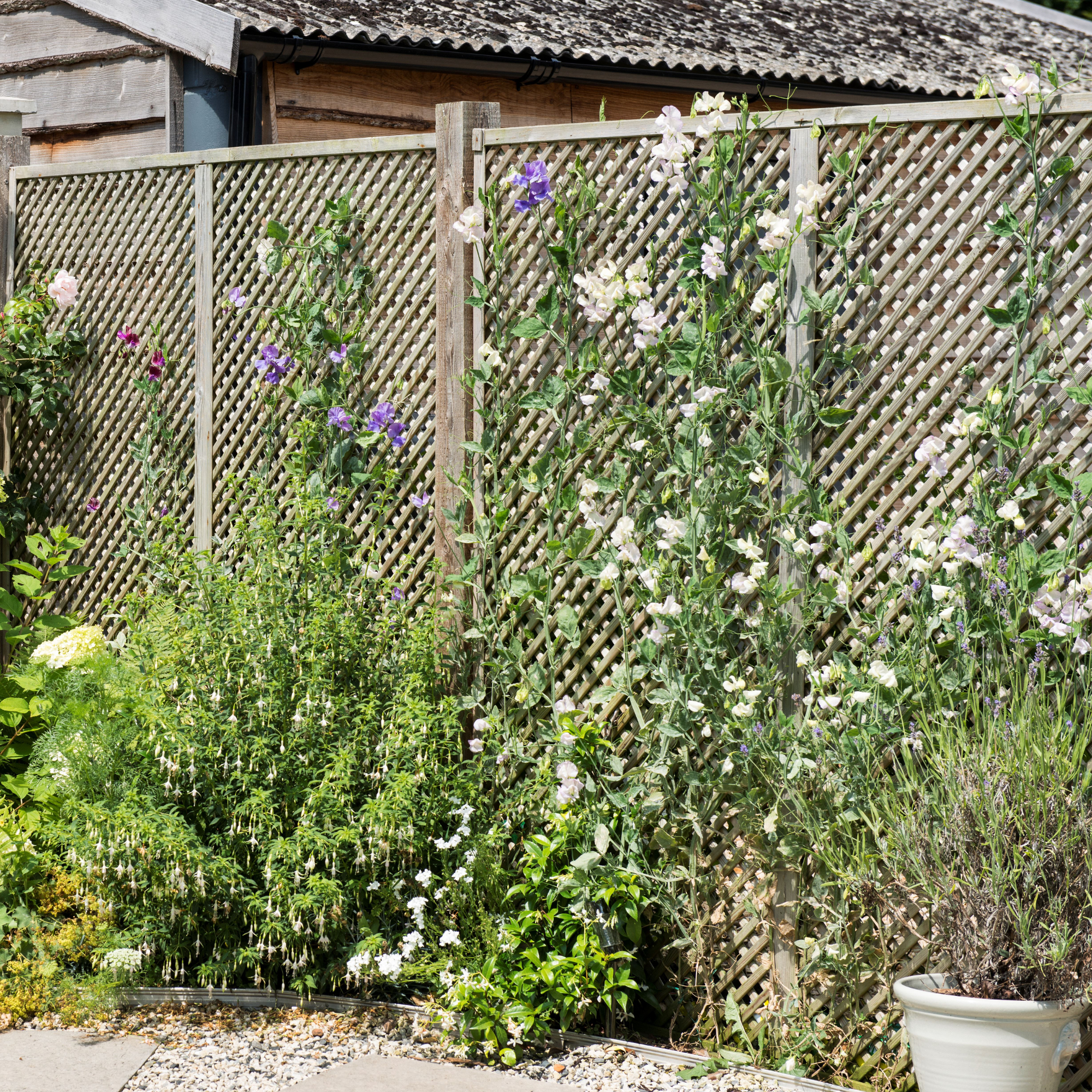
4. Prune and trim
By the time you’ve cleared some space and removed all of the overgrowth, your once-overgrown garden should now look a million times better. But to get it in as healthy a state as possible, you should then prune and trim the hedges and trees that are left.
Tony says, ‘Trim back overgrown plants and bushes, ensuring you make clean cuts to encourage healthy growth. Then, shape shrubs and hedges to improve their appearance and promote better air circulation.’
5. Tackle weeds
If your garden has been overtaken by overgrown plants and trees, there’s a high chance that it’s also been overtaken by weeds. So, your next step is to get rid of weeds.
There are so many natural ways to get rid of weeds that we’d advise against using chemical weed killers. And as Tony says, ‘You can use a hoe or weeding tool to remove weeds from the soil.’
In fact, Ideal Home’s Senior Digital Editor Jenny McFarlane swears by the Root Slayer for getting rid of weeds in her garden.
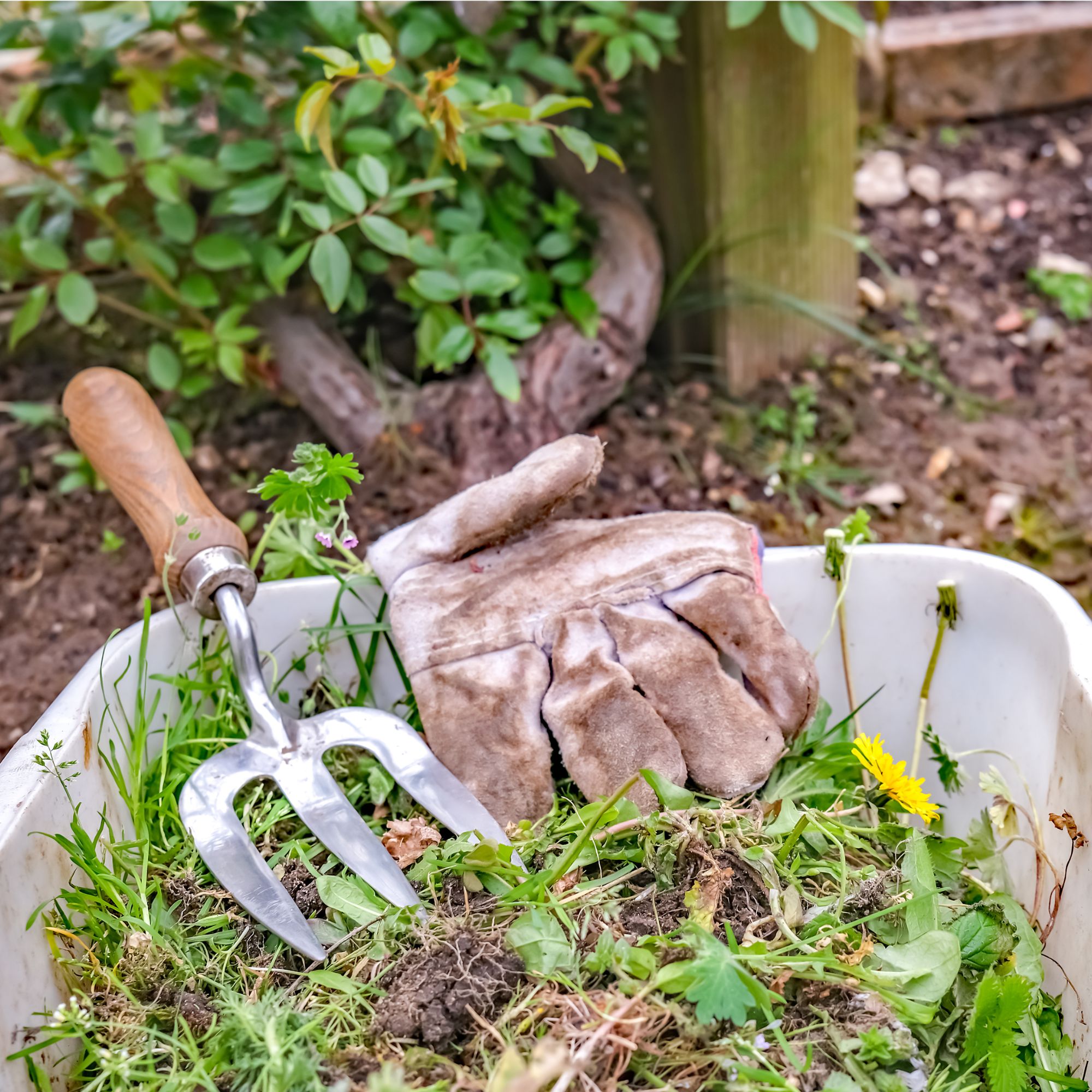
6. Rejuvenate the soil
By the time you’ve cleared some space, pruned all of your larger trees and hedges, and got rid of weeds, you should be left with a fairly blank canvas. But before you start planting, it’s a good idea to assess and rejuvenate the soil.
In this instance, we’d suggest testing your soil’s pH and also testing for nutrient deficiencies in the soil to see what you’re working with. But even on the off-chance that you have high-quality soil, it’s well worth rejuvenating it anyway.
Tony says, ‘Turn the soil with a fork or tiller to aerate it and then remove any remaining weeds and roots. Add compost or soil conditioner to improve soil fertility and structure.’
7. Define new planting areas
With healthy, happy soil around you, you can really get started on bringing your garden ideas to life. But before you start buying or moving current plants, you should define new planting areas. These could include garden borders, raised garden beds, or even a container garden.
Morris says, ‘If you need to create new beds for planting or to redefine your planting areas, make sure this is a priority before planting or dividing plants you already have. It can be much more difficult to do this when plants are in.’
When doing this, it’s also important to note where these areas are located (for example, does it get full sun or partial shade?) and how much space you have to work with. Then, you can move on to the fun part.
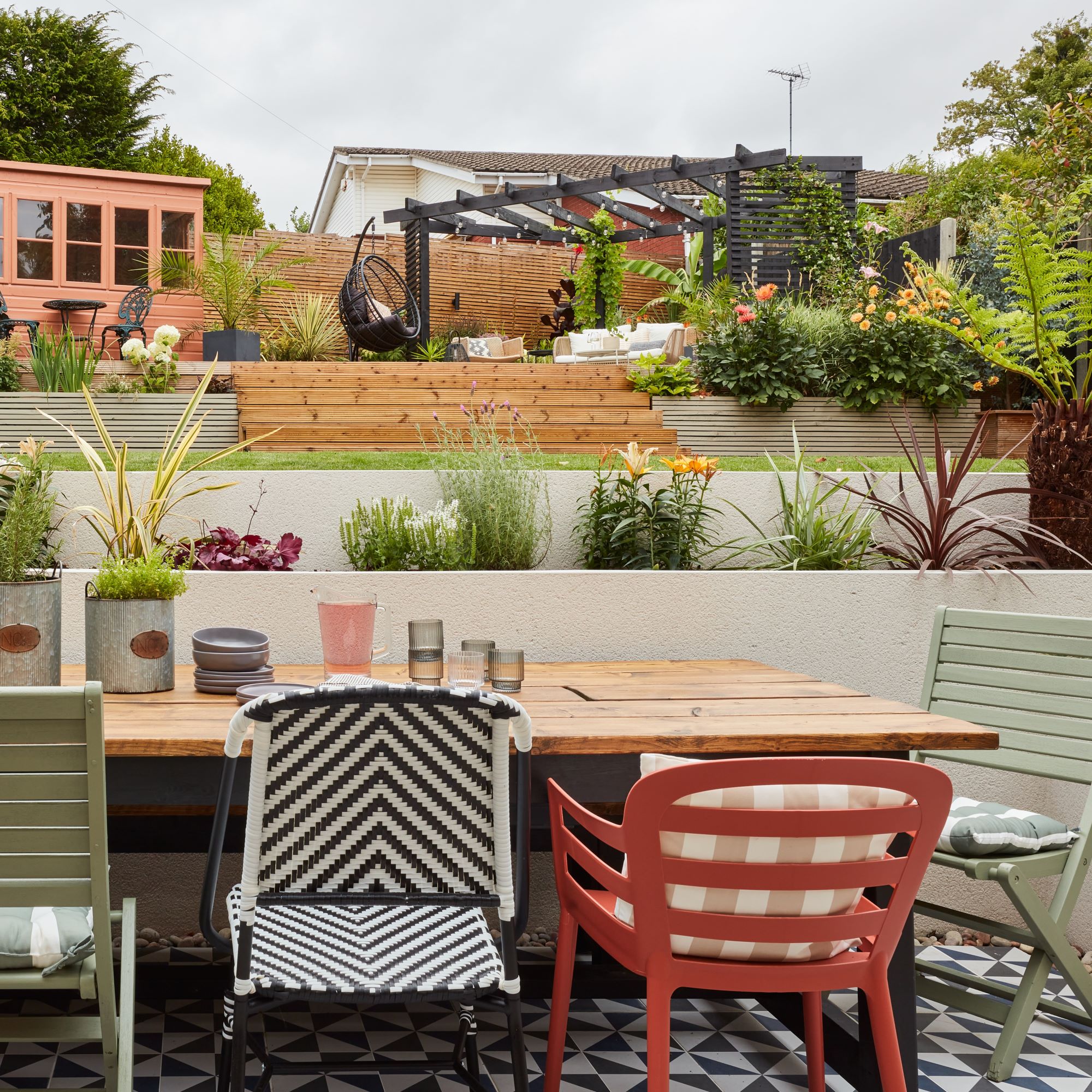
8. Get planting
The final piece of the puzzle is filling up your newly refreshed garden with more plants. Ultimately, the choice is yours when it comes to the plants you choose and where you plant them - but always double-check that you know what you’re planting, where you’re planting it, and what requirements they have.
Morris advises, ‘Consider native plants that are well-suited to your climate and soil and space plants properly to ensure they have room to grow and thrive. With persistence and care, your garden will soon be transformed into a beautiful, thriving space.’
And if you’re on a tighter budget, it’s best to opt for the best value-for-money plants so you can fill out your garden without spending a fortune.
FAQs
Can you complain about overgrown garden?
If your neighbour has an overgrown garden, it can certainly be an eyesore. But if your issue lies in the appearance of the garden, there’s not a lot that you can do and you don’t have any rights to complain.
However, if your neighbour’s overgrown garden is encroaching or potentially damaging your property, you can make a complaint to your local council. You could even approach the Environmental Health Department if things get really bad.
How to make a large garden more manageable?
Large gardens can quickly spiral out of control if you’re new to gardening or just don’t have the time to spend on it. But one of the best ways to make a large garden more manageable and to prevent overgrowth is to opt for a container garden rather than in-ground plants. By doing this, you can contain their growth and move them whenever needed.
Another option is to divide your garden into different sections - for example, a gravel area, a grassy area, a patio area, and so on. All of these sections will have different requirements, and you can then divide your time between these sections when you do eventually have a free moment.
So, now you know how to tackle an overgrown garden, it’s time to get the gardening gloves out…

Lauren Bradbury has been the Content Editor for the House Manual section since January 2025 but worked with the team as a freelancer for a year and a half before that. She graduated with a Bachelor’s degree in English and Creative Writing from the University of Chichester in 2016. Then, she dipped her toe into the world of content writing, primarily focusing on home content. After years of agency work, she decided to take the plunge and become a full-time freelancer for online publications, including Real Homes and Ideal Home, before taking on this permanent role. Now, she spends her days searching for the best decluttering and cleaning hacks and creating handy how-to guides for homeowners and renters alike, as well as testing vacuums as part of her role as the Ideal Home Certified Expert in Training on Vacuums, having spent over 110 hours testing different vacuum models to date!

